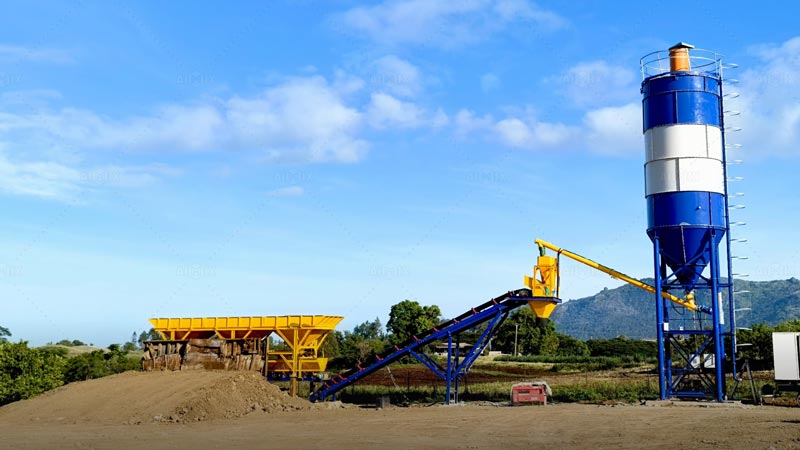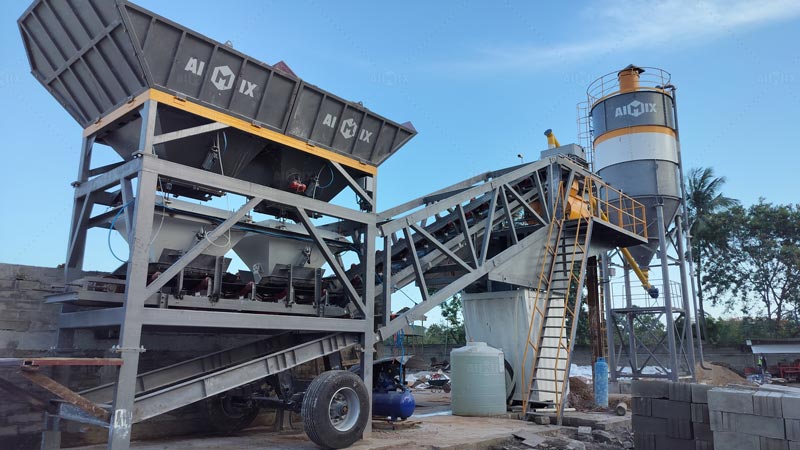
Latin America presents a wide range of environmental challenges for construction equipment, from coastal salt air to high-altitude cold. Testing a concrete plant under simulated extreme climates before delivery is essential to ensure reliable performance, reduce downtime, and protect investment value. Whether a project requires a concrete plant Chile for coastal infrastructure or a concrete plant in Peru for Andean operations, climate-specific validation minimizes the risk of operational failures once the plant is installed on site.
Concrete batching plants(planta de hormigon) must operate with consistent accuracy and durability. Environmental stressors such as temperature swings, humidity, dust, and altitude can affect mechanical tolerances, weighing accuracy, electronic stability, and material handling. Verifying equipment under conditions that mirror the target installation environment helps identify weaknesses—corrosion-prone components, inadequate sealing, or electronics vulnerable to moisture—before shipment. This proactive approach saves time and money by reducing post-delivery adjustments and unplanned maintenance.

Manufacturers typically run a series of focused tests designed to simulate operational stresses. The main categories include temperature resistance, humidity and corrosion resistance, dust ingress, high-altitude performance, and electrical/control stability. Each test targets a specific failure mode and generates measurable data for buyer review.
Temperature extremes influence motor performance, hydraulic behavior, sensor readings, and the physical properties of stored materials. Tests expose the plant to both high and low temperature ranges—often from -10°C up to +50°C—to observe thermal expansion, contraction, and the operating envelope of motors and pumps. For sites that see large diurnal swings or extreme heat, temperature testing confirms that mixing cycles, conveyor drives, and weighing systems maintain consistent output and precision.
Coastal regions demand special attention to corrosion. Salt-laden air accelerates metal degradation and can compromise bearings, structural bolts, and control cabinet seals. Humidity chambers and salt spray tests help validate that coatings, galvanization, and enclosure ratings are adequate for long-term service. A concrete plant Chile(plantas de hormigón Chile) destined for coastal infrastructure should show documented resistance to marine corrosion to avoid early component failures.
Many Latin American construction sites are located near quarries or deserts where dust can rapidly accumulate. Ingress testing checks seals, filters, and bearing protections while the equipment runs in a dusty environment. The goal is to ensure that load cells, air intake systems, and lubrication points are protected and that the plant can maintain weighing accuracy and mechanical reliability under prolonged dust exposure.
Altitude affects air pressure, combustion performance (if applicable), and sensor calibration. A concrete plant in Peru(planta de concreto en Perú) installed above 3,000 meters must have its pneumatic components, compressors, and instrumentation validated for low-pressure conditions. Tests simulate reduced oxygen and pressure levels, confirming that dosing, mixing, and control algorithms remain accurate and that cooling systems perform within required limits.
Electronic components are often the most sensitive to environmental stress. Continuous operation tests under varied temperature and humidity conditions verify PLC stability, HMI responsiveness, and data integrity. Tests should include simulated voltage fluctuation scenarios, transient surge exposure, and long-duration runtime to reveal memory leaks, software glitches, or faulty wiring that could cripple plant operations once installed.
To make climate testing credible and actionable, it must follow recognized standards and produce comprehensive deliverables. Commonly referenced standards include ISO and IEC environmental test protocols, ASTM salt spray and corrosion methods, and local regulatory requirements. Each test should be recorded, repeatable, and traceable to specific serial numbers and component IDs.
Buyers in the region should proactively request climate validation reports and, when possible, witness tests remotely or in person. Practical steps include:
Ask the supplier for documented examples of similar plants operating in regions like coastal Chile or high-altitude Peru. Evidence of long-term service and spare-parts availability indicates that the design has already been field-proven.
Ensure test reports and operation manuals are available in both English and Spanish to reduce the risk of misinterpretation during installation and commissioning.
Confirm local service capabilities or partner networks for faster maintenance response. Environmental stress often accelerates wear; having a dependable parts and service pipeline in Latin America will minimize downtime.

Testing concrete batching plants in extreme climates is an investment in reliability. By simulating the real-world conditions a plant will face—whether marine corrosion near Chile’s coasts or high-altitude effects in Peru—manufacturers and buyers can identify vulnerabilities, validate protective measures, and document readiness before shipment. For construction projects across Latin America, climate-focused testing reduces risk, shortens commissioning time, and helps ensure consistent, high-quality concrete production under any working condition.